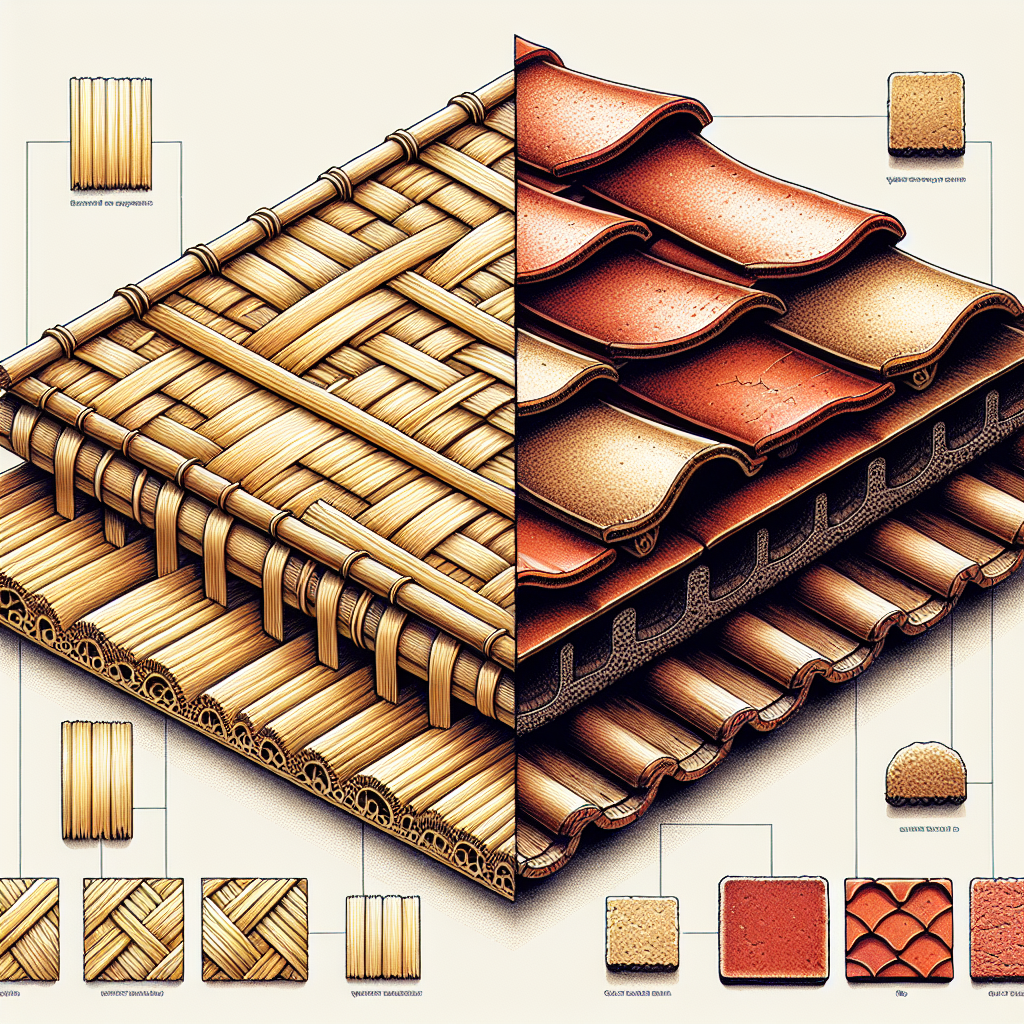
Traditional roofing materials like asphalt shingles, clay tiles, and metal sheets have long been the go-to for builders and homeowners alike. However, a growing trend toward sustainability and distinct architectural expression has seen a rise in unconventional roofing materials that aren’t just novel—they’re fully functional and ecologically sound. From recycled plastic to living green roofs, the quest for alternative roofing solutions has taken an exciting turn.
Roofs are the unsung heroes of our homes, shielding us from the elements, providing insulation, and even contributing to our property’s overall aesthetic appeal. Because traditional roofing materials like asphalt shingles, slate, or clay tiles dominate the market, they often overshadow other innovative and eco-friendly options. Yet, a growing number of homeowners are looking beyond these conventional choices and seeking out alternative materials that are environmentally responsible and unique in character.
Recycled Rubber Roofing
Composite roofing stands out as an exceptional roofing solution, encompassing a blend of fiberglass, recycled paper products, and asphalt. This innovative approach to roofing materials offers a multitude of advantages that extend beyond traditional options. Engineered to mimic the appearance of wood or slate, composite roofs bring together style and substance with remarkable efficiency.
One significant advantage of composite roofing is its lightweight nature, reducing the strain on a home’s structure compared to heavier traditional materials. This not only contributes to the longevity of the building but also offers a practical and durable roofing solution. The versatility of composite roofs is evident in the vast array of available colors and styles, providing homeowners with the flexibility to choose an option that complements both personal preferences and architectural designs.
Cost-effectiveness is another compelling aspect of composite roofing. While the initial investment may be comparable to other roofing materials, the long-term savings become apparent due to the reduced maintenance requirements and lower replacement costs. The inherent durability of composite roofing materials ensures a prolonged lifespan, making it a financially prudent choice over time.
An environmentally conscious choice, composite roofing incorporates recycled materials, aligning with sustainability goals. As the global focus on climate change intensifies, the resilience of composite roofs against extreme weather conditions adds an extra layer of appeal for those seeking a responsible roofing solution.
Metal Roofing: The Modern Approach
Once reserved for industrial buildings or rustic barns, metal roofing has transformed into a stylish and smart choice for residential properties. Homeowners are now turning to materials like steel, aluminum, and copper for their roofing needs. Metal roofs promise longevity, energy efficiency, and a plethora of design options that can mimic the appearance of traditional materials or flaunt their metallic nature proudly.
A metal roof’s lifespan is impressive, often lasting 40-70 years, depending on the material. They are fire-resistant, reflect solar radiant heat, thereby slashing cooling costs, and are almost maintenance-free. Furthermore, they are 100% recyclable at the end of their life, thus reducing landfill waste. For those who like to make a statement, metal roofs can be customized with a variety of coatings and colors to match any architectural style or personal preference.
The Charm of Reclaimed Materials
There’s something deeply captivating about using materials that have a story to tell. Reclaimed roofing materials like wood shakes or slates are harvested from old buildings, honing an aesthetic that newer materials can’t easily replicate. These materials prevent waste and reduce the need for new resources and also offer a distinctive charm that becomes the focal point of a home.
Using reclaimed materials requires diligence, as they need to be properly inspected and treated for any signs of damage or decay. However, when sourced carefully, they can provide a roof that’s environmentally responsible and brimming with history. It’s important to note that their quality varies, and not all reclaimed materials will offer the same level of durability as new ones, but they can still provide substantial protection for the home when installed correctly.
A Case for Composite Roofing
Composite roofing, a term encompassing various materials such as fiberglass, recycled paper products, and asphalt, is gaining popularity as an innovative roofing solution. These synthetic shingles are designed to emulate the aesthetics of wood or slate, while surpassing them in weather and fire resistance. The unique blend of materials in composite roofs achieves a harmonious balance between style and substance.
Compared to traditional materials, composite roofing is notably lighter, alleviating the burden on a home’s structure. The versatility of these roofs extends to a diverse range of colors and styles, providing homeowners with ample choices to match their preferences and architectural designs. Beyond aesthetics, composite roofs present a cost-effective option over time due to their low maintenance requirements and reduced replacement costs
Living Roofs: Green in Every Sense
Undeniably the most visually stunning options are living roofs, also known as green roofs. These innovative designs transform your rooftop into a living, breathing ecosystem. Beyond their beauty, living roofs improve air quality, offer thermal insulation, and aid in managing stormwater. They can be installed using a variety of plant life, from hardy succulents to full gardens, depending on the structural abilities of the building.
Creating a living roof involves more than just planting greenery; it requires several layers, including water proofing, a root barrier, a drainage system, and soil. The benefits, however, may outweigh the complexities. They create a natural habitat for wildlife, reduce the urban heat island effect, and can significantly prolong the life of the roof below as they protect it from UV rays and extreme temperatures.
These unconventional roofing materials show that it’s possible to step outside the norm while still achieving practical and aesthetically pleasing results. Whether it’s the durability of recycled rubber, the sleekness of metal, the character of reclaimed materials, the versatility of composites, or the vibrancy of living roofs, the options are abundant and ripe for exploration. Homeownership is about personal expression, and with these innovative roofing choices, you can make a statement that resonates with your values of sustainability, efficiency, and design.